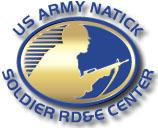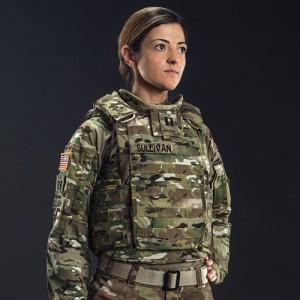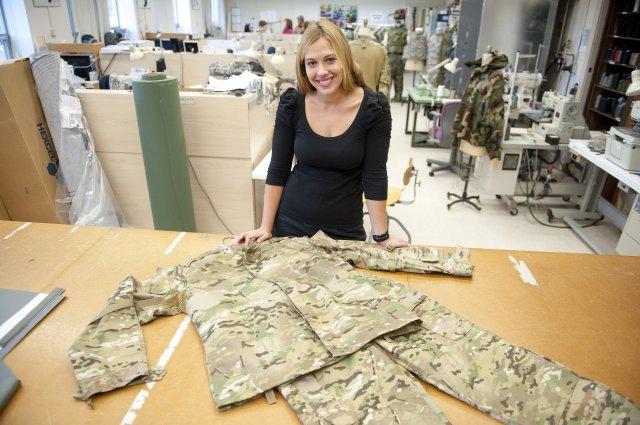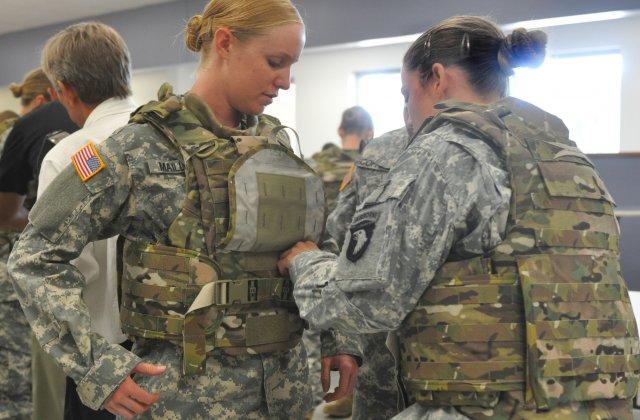It seems like every week we cover another story related to the United States Army’s current and future applications of 3D printing, both on and off the battlefield. From 3D printed warheads and food, to 3D bioprinting skin  in order to help heal wounded soldiers, the Army has shown major interest in this incredible technology. This month, an entire issue of Army Technology Magazine was devoted to the research that is being done within the field of 3D printing, and the applications of which the Army is already exploring.
in order to help heal wounded soldiers, the Army has shown major interest in this incredible technology. This month, an entire issue of Army Technology Magazine was devoted to the research that is being done within the field of 3D printing, and the applications of which the Army is already exploring.
A soldier’s uniform is extremely important to their well-being. In addition to providing a means to carry all sorts of equipment and housing armor for protection, it also is the camouflage used to make soldiers on the battlefield less noticeable. Currently, designers rely on 2D CAD software to create the correct schematics for each piece, however, in the near future 3D printing will likely be incorporated into that design process as well.
The U.S. Army Natick Soldier Research, Development, and Engineering Center (NSRDEC) is where products such as field clothing, hats, combat clothing, body armor, and helmets are designed. Annette LaFleur is a team leader at the NSRDEC, and oversees numerous projects related to the production of such garments and equipment.
“It could improve flexibility,” LaFleur said of 3D printing. “You could incorporate hard and soft materials together into one design. So, maybe you have some sort of clothing or protective item that has rigid areas that move into soft areas, where our body needs to flex. That could be really exciting because that is hard to accomplish with a regular textile.”
 Like LaFleur touched on above, there are several ways in which 3D printing could play a major role in the production and advancement of the clothing and armor worn by soldiers, both on and off the battlefield. For one, there would be less stitching and seams required in garments. Clothing could be catered to the exact size of a particular solider, while design programs could determine how to print each piece with the least number of seams and stitches as possible. Such an accomplishment may seem rather insignificant, but the comfort of a soldier is incredibly important, especially during long, tough missions.
Like LaFleur touched on above, there are several ways in which 3D printing could play a major role in the production and advancement of the clothing and armor worn by soldiers, both on and off the battlefield. For one, there would be less stitching and seams required in garments. Clothing could be catered to the exact size of a particular solider, while design programs could determine how to print each piece with the least number of seams and stitches as possible. Such an accomplishment may seem rather insignificant, but the comfort of a soldier is incredibly important, especially during long, tough missions.
“We could create something that is a totally perfect fit and reduce weight, maybe reduce bulk. A lot of the neat textiles that are being 3-D printed, even out of these synthetics, have a 3D structure to them,” LaFleur said. “That makes you think about spacer-type materials where you have air flow, which is so important if our Soldiers are going to be somewhere hot again, whether it is jungle or desert.”
Other applications could include the printing of ballistic materials for armor, in precise shapes, making it less expensive and more efficient at protecting a soldier. The team at NSRDEC already heavily uses CAD software for their 2D designs, so once the technology is available, where they can incorporate 3D printing into the design process, the framework is already partially in place.
Do you think we will see 3D printed clothing or armor within combat any time soon? What about for civilian use? Let’s hear your thoughts in the 3D printed Army gear forum thread on 3DPB.com.
[Source: Army Technology Magazine]Subscribe to Our Email Newsletter
Stay up-to-date on all the latest news from the 3D printing industry and receive information and offers from third party vendors.
Print Services
Upload your 3D Models and get them printed quickly and efficiently.
You May Also Like
Heating Up: 3D Systems’ Scott Green Discusses 3D Printing’s Potential in the Data Center Industry
The relentless rise of NVIDIA, the steadily increasing pledges of major private and public investments in national infrastructure projects around the world, and the general cultural obsession with AI have...
3DPOD 260: John Hart on VulcanForms, MIT, Desktop Metal and More
John Hart is a Professor at MIT; he´s also the director of the Laboratory for Manufacturing and Productivity as well as the director of the Center for Advanced Production Technologies....
Etsy Design Rule Change Reduces Selection of 3D Printed Goods
Online marketplace Etsy has implemented a rule change requiring all 3D printed goods on the site to be original designs. The update to the site’s Creativity Standards states, ¨Items produced using...
E-Beam OEM Wayland Additive Partners with USC Racing to 3D Print Titanium Exhaust Collector
Every year, standards organization SAE International holds a competition called Formula SAE, in which students from both undergraduate and graduate programs design, build, and race small formula-style race cars. For...



































